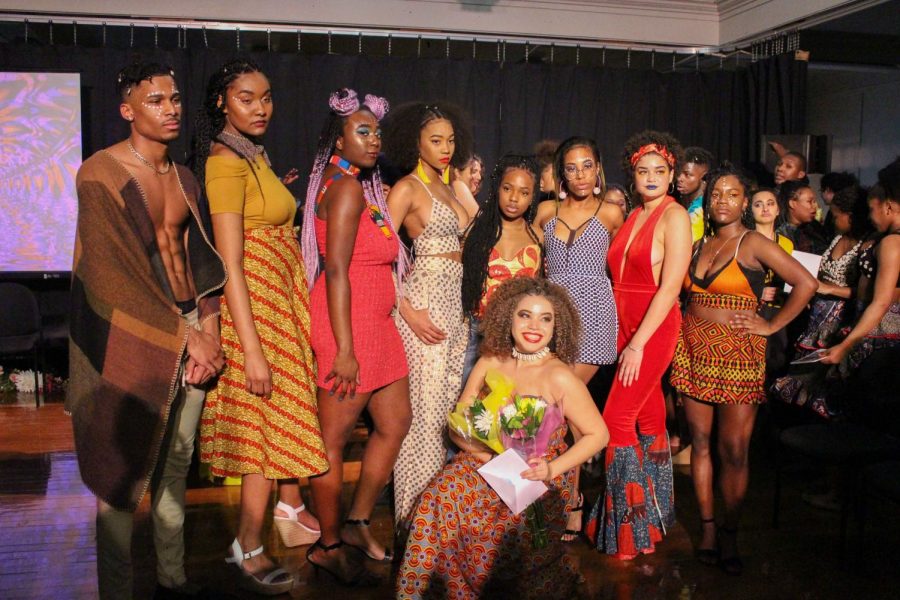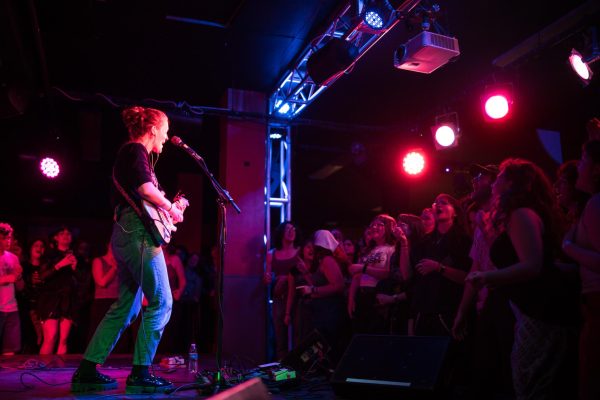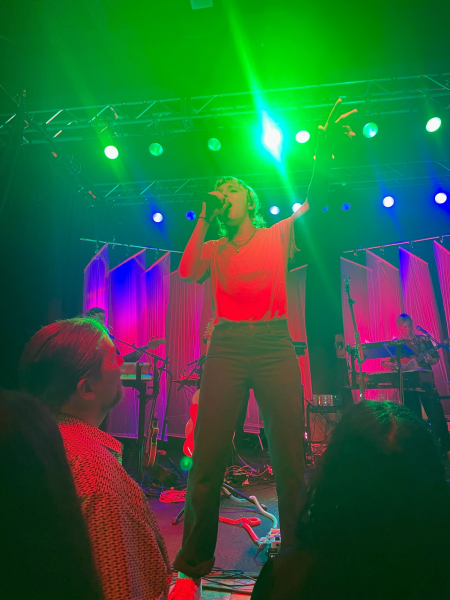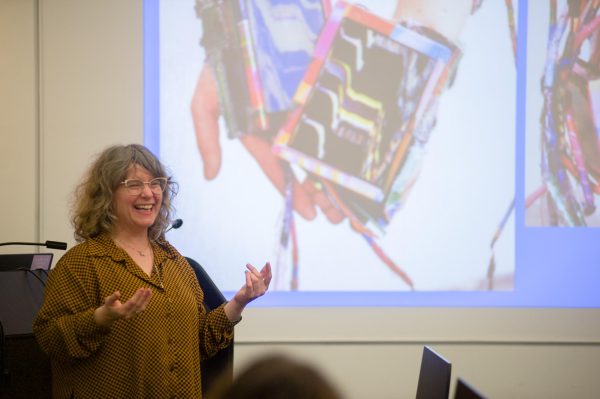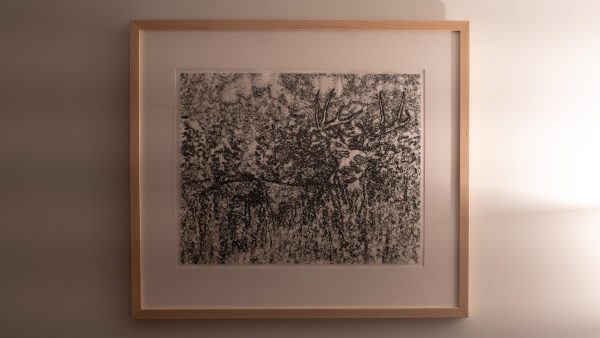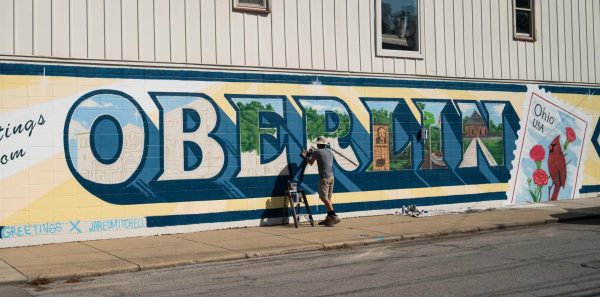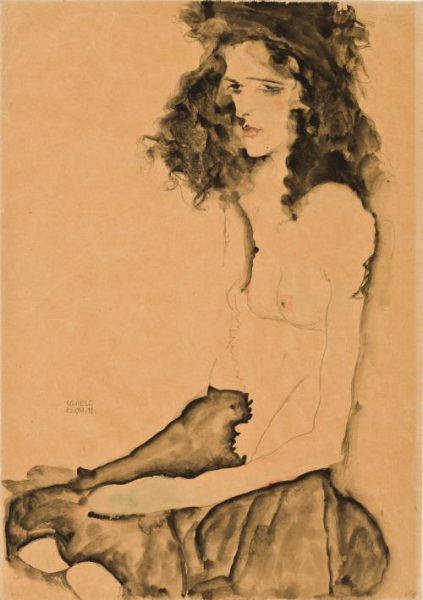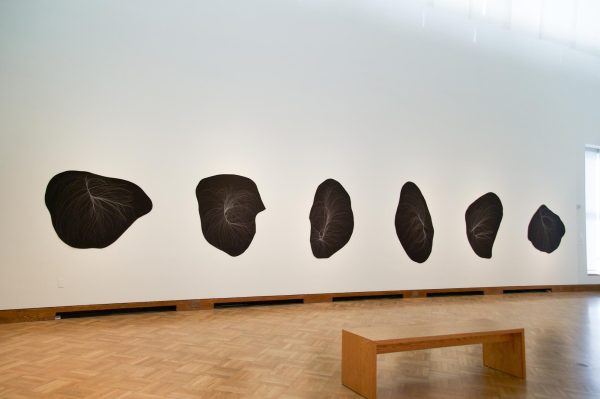Black Community Reclaims Its Fly at Sankofa Remix’d
Creative director, producer, and College senior Kiela Nelson, designer Imani Kutti, and models pose at “Sankofa Remix’d: Reclaiming My Fly,” the Black History Month Fashion Show.
Black History Month came to a beautiful end with the “Sankofa Remix’d: Reclaiming My Fly” fashion show last Saturday. The show featured Black models, designers, singers, rappers, and dancers from both Oberlin College and The Djapo Cultural Arts Institute in Cleveland.
College senior Kiela Nelson, the creative director of the show, attributed her vision for the cultural showcase to her semester abroad in Senegal.
“We came up with this title ‘Reclaiming My Fly,’ because sankofa means going back to your roots to gain that knowledge, that wisdom,” Nelson said. “I went to Senegal and came back with a whole new mindset.”
The show featured clothes by Black designers Sophie Umazi Mvurya, OC ’16, and Nelson’s high school friend Imani Kutti. Director and Faculty-in-Residence of the Afrikan Heritage House and Black History Month chair Candice Raynor played a large role in the fashion show.
“It had the most moving parts, but most of the moving parts were at Oberlin, so that made it easier,” Raynor said. “Having someone like Kiela being the director, who is so connected on campus, is in the arts community herself and really knows a lot of people, [made] it really easy … getting people together.”
Black beauty and talent were displayed with finesse and attention to detail. Dancers and models alike showcased a variety of hair, makeup, and clothing styles. In a wide array of colors, clothing ranged from swimwear to casual, business casual to formal, all either originating from or pointing towards their African heritage.
“[We had] different aspects, like the fashion, dope hairstyles, bomb makeup, dancers, singers, rappers, emcees, DJs, drummers — every aspect of the Black culture that I could find,” Nelson said. “Even set design — I couldn’t do much, but I asked everybody to bring a tapestry. My grandmother [and] I grew up with tapestries [and] figurines. [I wanted] things that made them feel closer to home, closer to Africa, closer to the continent. Being in that room, I wanted people to feel like they were home.”
The models also advanced a body-positive message against the unrealistic and often unhealthy body-image issues created by the fashion industry in the U.S. and Europe. The fashion show modeled strength in tandem with beauty. Some performers continued to ride the Black Panther wave, often mimicking Wakandan poses and postures.
“Specifically [among] Black people, there are so many different body types,” Nelson said. “People have this stereotype of a Black body, but there’s not one. There are so many different body types and if I’m going to have a fashion show I want everyone to be included. It’s not just tall or thin — it’s everybody.”
The finale of the show was a performance of Djapo, an African community dance and drum performance led by Visiting Assistant Professor of Africana Studies and Dance Talise Campbell. Campbell is also the Artistic Director of the Djapo Cultural Arts Institute, and brought her performers to Oberlin for Black History Month, leaving the crowd absolutely astounded by the coordinated, energetic, and all around spectacular dance moves. Djapo is taught at Oberlin as an open-to-all class in Warner Dance Studio from 7–8:30 p.m. Tuesdays and Thursdays.
“[Campbell is an] artist-in-residence in the Africana Studies Department,” Raynor said. “If you want to learn how to dance a little bit like the closing dancers that night, you have the opportunity to be taught by the woman who put all that together.”
It’s important to note that everything that has been taught to the community by the organizers and participants of Black History Month is to be carried forward in daily interactions and mindsets.
“In the Afrikan Heritage House, Africana Studies Department, and MRC, it’s Black History Month all year long,” Raynor added. “While we may not have events every week or on such a grand scale, there are similar events with similar energy. There are a lot of opportunities to learn and to enjoy and to celebrate our culture.”
The Oberlin College Black Musicians Guild was one of the main sponsors of the event, alongside several other student organizations around campus. It is only through the faith and support of these organizations, paired with the dedication of the performers, that this fashion show was able to reach the level of quality that it did.
“I’ve been part of many student organizations here,” Nelson said. “I was a member of And What?!, co-chair of [both] Umoja Steppers and the Soul Collective, which is an a capella group. I’ve been in a lot of different organizations so I know they have a budget each year and they can use it however they please. You can’t get anything unless you ask for it.”
The event epitomized Oberlin’s culture of supporting student initiatives, particularly those of students of color.
“I think that Oberlin’s culture informs our Black History Month celebration, its history, and its commitment to those things,” Raynor said. “I tried to make sure all those things were incorporated in to the celebration; I wanted it to reflect the culture of the school. It did.”


